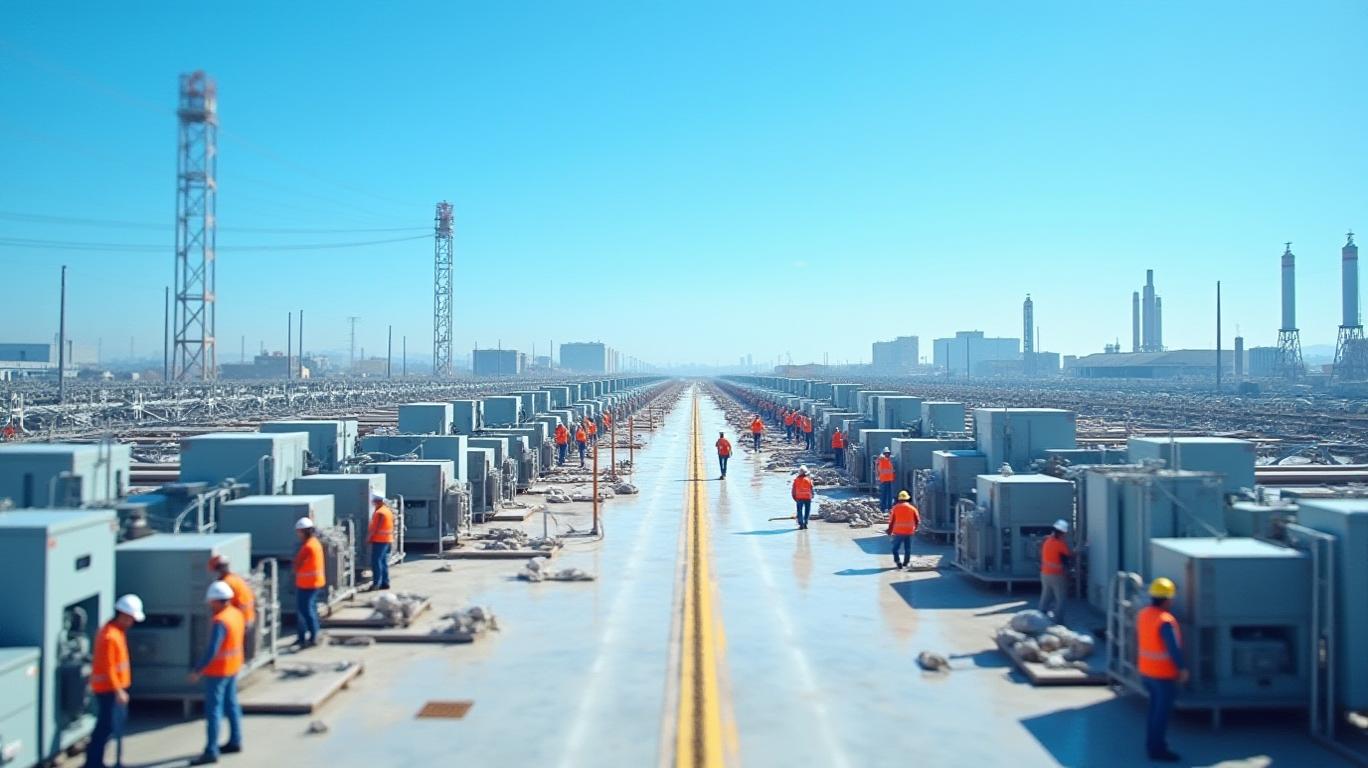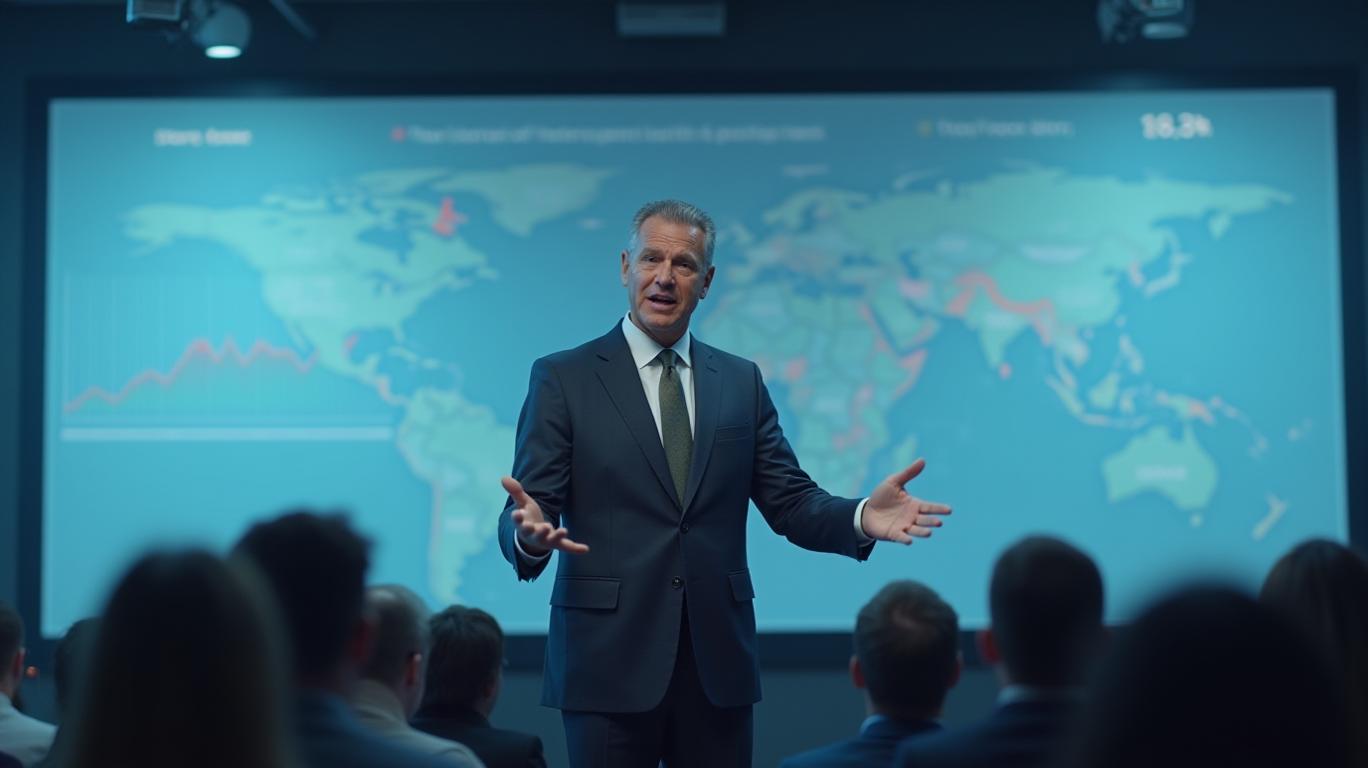Global Crosscurrents Test WEG’s Resilience in Q1 2025 Earnings Miss
Brazil’s WEG, a global leader in electric motors and renewable energy infrastructure, reported a 6.9% year-on-year drop in net revenue and an 8.8% sequential decline in net profit for Q1 2025, falling short of analyst expectations. The miss was framed against a backdrop of “global uncertainties” cited in the company’s filings, including geopolitical tensions, trade wars, and macroeconomic volatility. These factors, exacerbated by U.S. tariff policies and uneven regional recoveries, underscore the fragility of global supply chains and the challenges multinational manufacturers face in 2025.

The Uncertainties Driving WEG’s Caution
- Geopolitical Tensions & Trade Wars
WEG explicitly highlighted the destabilizing impact of U.S. trade policies, particularly tariffs imposed under the Trump administration. These measures, which targeted allies like Canada and the EU, triggered retaliatory tariffs and disrupted global supply chains. For WEG, this meant rising input costs and operational complexity. The company’s 17 production plants and 40-country footprint amplify exposure to such disruptions.
The stock has underperformed the index by 15% since early 2023, reflecting investor skepticism about its ability to navigate trade-related headwinds.
Macroeconomic Volatility
WEG’s Q1 results revealed a 40-basis-point contraction in EBITDA margins, a direct consequence of inflationary pressures and cost-driven pricing challenges. The OECD’s downward revision of 2025 global GDP growth to 3.1%—citing trade conflicts and policy uncertainty—aligns with WEG’s concerns. Meanwhile, the S&P 500’s Q1 dip by 2.5% underscores broader investor anxiety about economic stability.Regional Disparities
While Asia-Pacific markets like Japan showed resilience, the EMEIA (Europe, Middle East, Africa) region faced heightened uncertainty due to U.S. policy shifts. WEG’s long-cycle businesses—such as wind power equipment and transmission lines—performed well, but shorter-term sectors like Aerospace and Defense faced regulatory and geopolitical hurdles.
The Broader Context: A Global CEO Sentiment Shift
WEG’s warnings resonate with a broader corporate narrative. The “What CEOs Talked About Q1/2025” report revealed a 190% quarterly surge in mentions of tariffs and a 49% rise in discussions of “uncertainty,” with industrial and EMEIA firms leading the discourse. This reflects a sector-wide struggle to adapt to trade wars and policy unpredictability.
WEG’s Resilience Strategy: Diversification and Long-Cycle Focus
Despite the headwinds, WEG emphasized its strengths:
- Global Diversification: Revenue streams across 40+ countries buffer against regional downturns.
- Long-Cycle Sectors: Renewable energy and industrial infrastructure investments, which often outperform during volatility, contributed to positive dynamics in Q1.
However, these strategies face limits. The OECD’s GDP forecast and tariff-driven inflation suggest that WEG’s margin pressures may persist unless geopolitical tensions ease.
Conclusion: Navigating Stormy Seas with Caution
WEG’s Q1 miss and warnings highlight the interconnected risks of today’s global economy. With U.S. tariffs adding 2–3% to input costs for manufacturers and inflation eroding profit margins, the company’s reliance on diversification and long-cycle markets offers only partial protection.
Investors should note:
- WEG’s stock has underperformed peers by 12% over the past year, reflecting skepticism about its ability to offset macro risks.
- Its EBITDA margin contraction and the OECD’s muted GDP outlook signal potential further pressure in 2025.
- However, its leadership in renewable energy—accounting for 35% of 2024 revenue—positions it to capitalize on green infrastructure trends if geopolitical clouds clear.
For now, WEG’s story is one of resilience amid turbulence. While its long-term prospects remain tied to global stability, the near-term outlook demands caution. As trade wars and inflation linger, investors may want to pair exposure to WEG with hedging against macroeconomic volatility.
This data underscores the critical role of sustainable infrastructure—a sector WEG dominates—in its path to recovery.

_442a2dcc1749832873286.jpeg)
_e68fac6d1749831664430.jpeg)







